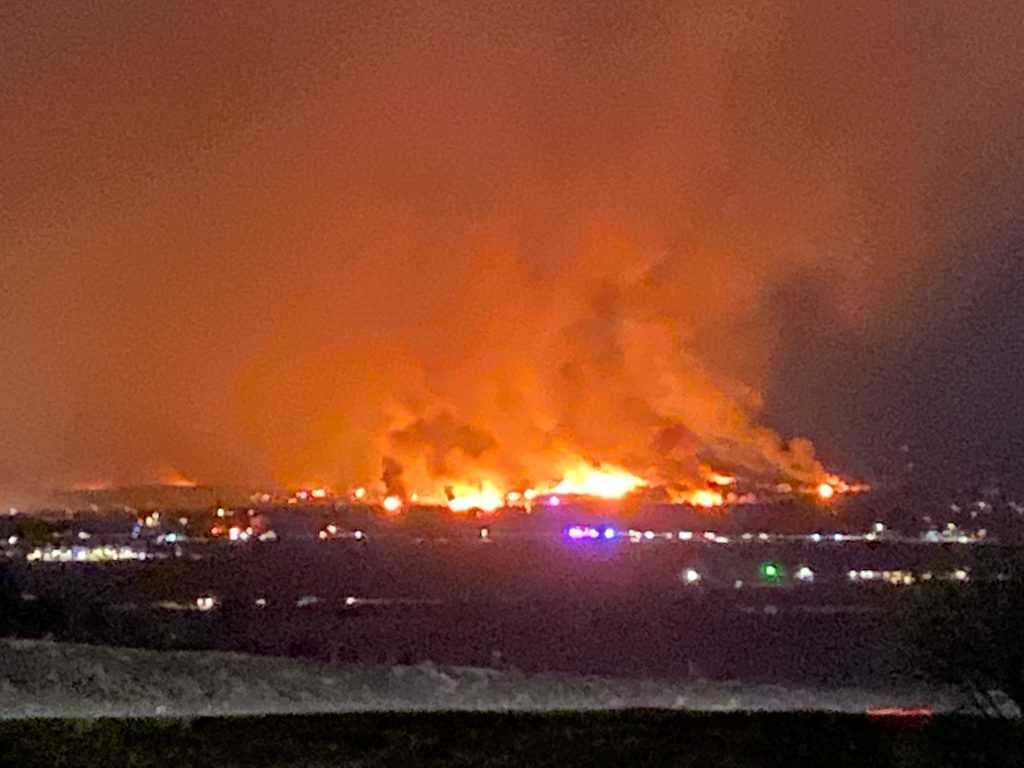For many Coloradans, the Palisades Fire in Southern California brings back vivid memories of one of the state’s most destructive wildfires: the Marshall Fire. On December 30, 2021, the fire roared through Superior and Louisville, leaving a lasting mark on the communities just south of Boulder. Here, we take a look back at the factors that led to this catastrophic event, its impact, and what it taught us about wildfire preparedness in Colorado.

Credit: NOAA/NWS Boulder
A Perfect Storm of Conditions
The Marshall Fire was fueled by a combination of intense winds and extreme drought conditions. The day began with a mountain wave wind event, characterized by very strong westerly winds descending from the Front Range Foothills. Sustained winds of 50 to 60 mph, with gusts reported at 100 mph or more, were present along Highway 93 and into Superior and Louisville. The highest gusts included a staggering 115 mph near the base of the foothills. These winds created a dangerous environment where any spark could rapidly ignite a wildfire.
Adding to the peril, Colorado was experiencing severe drought conditions. While the first half of 2021 saw abundant precipitation that spurred lush grass growth, the latter half of the year was exceptionally dry. Denver recorded its driest July-to-December period on record, and vegetation across the Front Range had become critically dry. The combination of gale-force winds and parched fuels created a scenario primed for disaster.
The Fire’s Rapid Spread
The fire began shortly after 11 a.m. near the small town of Marshall. Within hours, it consumed over 6,000 acres, driven by relentless winds. Entire neighborhoods in Superior and Louisville were devastated. By the time the fire was extinguished, it had destroyed 1,084 homes and seven commercial buildings, while damaging 149 additional homes and 30 commercial properties.
The fire’s rapid spread was visible in real time. Smoke plumes were captured on radar, and the heat signature was detected from space by the GOES-16 satellite. Time-lapse imagery showed the smoke’s interaction with the mountain wave winds, demonstrating how these unique meteorological conditions exacerbated the fire’s intensity and spread. Mountain wave winds, which occur when strong airflow moves over mountainous terrain, can descend rapidly on the lee side, creating turbulent gusts. This turbulence can fan flames unpredictably and push embers far ahead of the main fire line, intensifying its spread and making containment efforts exceedingly difficult.
The Human and Economic Toll
The Marshall Fire was not only the most destructive wildfire in Colorado’s history in terms of structures lost, but it also took a significant emotional and economic toll. Thousands of residents were displaced, some with only minutes to evacuate. The fire caused over $2 billion in damages, making it one of the costliest disasters in the state’s history.
Lessons Learned
In the aftermath of the Marshall Fire, several lessons emerged:
- Improved Preparedness: The need for wildfire evacuation plans became clear. Communities now emphasize early warning systems and fire mitigation strategies.
- Drought Awareness: As climate change continues to alter precipitation patterns, the importance of monitoring and managing drought conditions cannot be overstated.
- Wind Event Awareness: Understanding and forecasting mountain wave events can help communities better prepare for days of heightened fire danger.
A Reminder for All Coloradans
The Marshall Fire serves as a sobering reminder of the devastating power of wildfires, especially in areas experiencing high winds and drought. As Coloradans watch the Palisades Fire unfold in California, the lessons of December 30, 2021, remain fresh. Wildfire preparedness, community resilience, and awareness of weather conditions are vital in protecting lives and property from future disasters.
For those affected by the Marshall Fire, the scars remain—but so does the resilience of the communities that endured it. It is a chapter in Colorado’s history that we will never forget.
